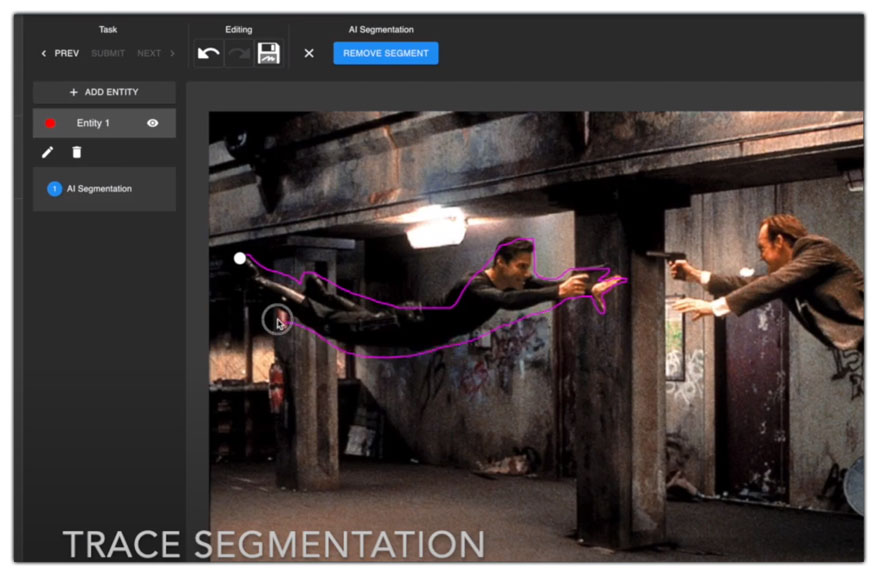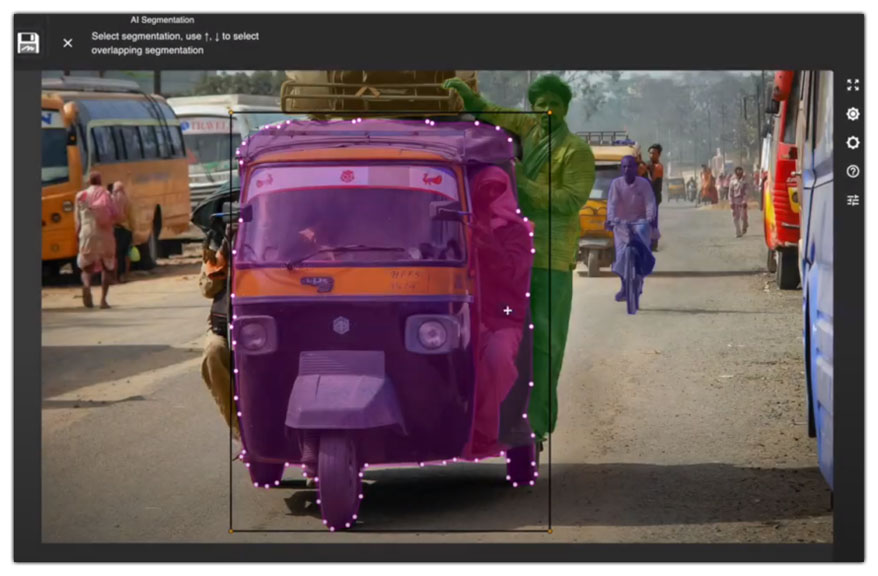The research group of the University of Toronto is working on tools to speed up standard annotations for computer vision. We’re a proud member of the research group, working closely with the leading expert in computer vision - prof. Sanja Fidler.
The Challenge
A modern approach to machine learning still heavily depends on annotated data, primarily connected through manual labor. It’s a time-consuming process prone to human error. We wanted to improve the process through human-in-the-loop AI models and new algorithms.
-
Artificial intelligence Artificial intelligence
Use of machine learning algorithms with the inclusion of human interaction.
-
Preobrazba procesov High impact
Potential to use the solution in many areas (computer vision, medicine, sports, fashion ...).
-
Success Mathematical modeling
Mathematical algorithms developed on cutting edge AI technologies.
-
Agilni pristop International R&D
We are actively cooperating with leading experts in the field of AI.
The Solution: Algorithms that assist manual annotators
Together with our partners, we have successfully developed algorithms that speed up the annotation process. Using recurrent and convolutional neural networks, the algorithms assist human annotators through both annotation creation and editing, while simultaneously learning to continuously improve from human assistance.
These state-of-the-art algorithms are fully integrated into the Toronto Annotation Platform, a web-based application that allows for larger, more efficient, and more accurate data annotation projects.
The result
Modern methods of machine learning depend heavily on extensive collections of annotated data, which to this day are still prepared with completely "manual" human work.
-
Freehand annotation
Using the freehand tool, the user roughly marks the desired detail in the image.

Preprosta človeška anotacija -
Automatic enhancement
The tool quickly and significantly improves annotation using RNN and CNN algorithms.

Izboljšava natančnosti z umetno inteligenco
This solution outperforms the standard, manual annotation in both automatic (10% absolute and 16% relative improvement in mean Intersection over Union) and interactive modes (requiring 50% fewer clicks by annotators).
-
Frame annotation
Using the rectangular selection tool, the user roughly marks the desired detail in the image.

Anotacija z okvirjem -
Annotation reduction
The tool allows you to remove redundant selection using (other) AI algorithms.

Odstranitev odvečne anotacije
Project partners
- University of Toronto, (coordinator: Sanja Fidler, PhD, associate professor at the University of Toronto, director of AI at NVIDIA),
- Donna Shukaris, (VPRI, innovations & entrepreneurship manager),
- Abelium d.o.o., (head of development, Marko Boben, PhD)
Media posts and useful links
- Toronto Annotation Suite (TORAS) is available to the public!
- TORAS - presentation
- TORAS - how to use it
Similar projects
- ACE.Trade - We developed an entry-level app for crypto trading. It simplifies the first steps in the crypto world for initiatives and first time traders, while staying compliant with regulations.
- PLASMA - A project for developing a banking and trading platform, upgraded with an innovative connection between the financial, fintech, and crypto worlds.
- DIGITRUST - A digital transformation of a business with innovative digital solutions and a decentralized system




